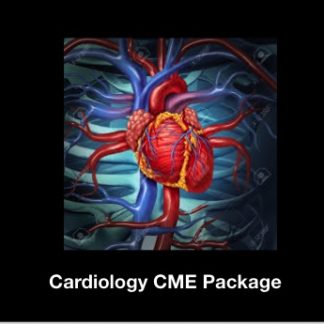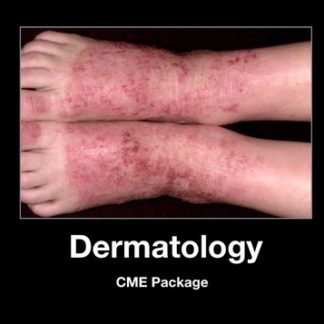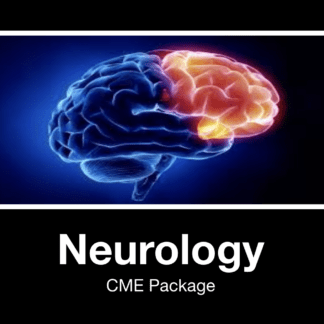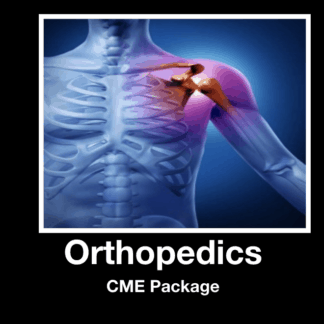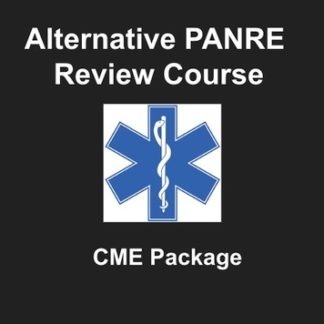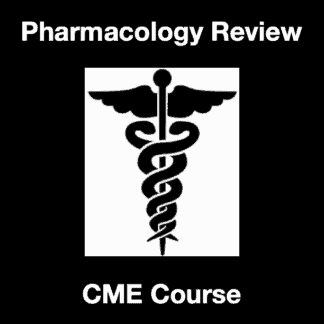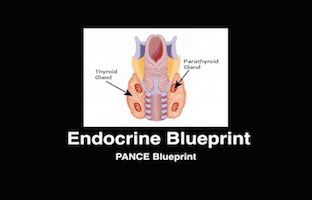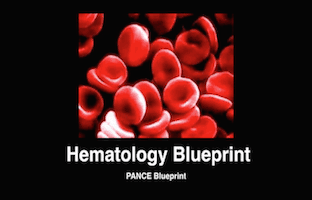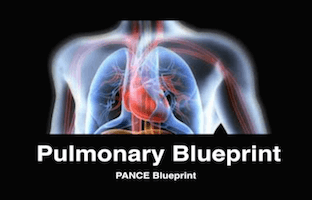Description
Endocrine Blueprint
This section is review of the Endocrine Section for the NCCPA Blueprint topic list for the PANCE and PANRE. This section contains the Endocrine Lecture Video (0:55:29), as well as 65 Multiple Choice PANCE style questions, answers and detailed explanations. Endocrine Lecture Slides are also included. This section will be continuously updated and you will be given access for 30 months.
This section is designed for physician assistants preparing to take the PANCE/PANRE. Medical students preparing for the USMLE and COMLEX may find this section helpful.
We do offer Category 2 CME with Amazon and Apple Gift Cards. Click here if interested in CME with Amazon and Apple Gift Cards
This is in a mobile friendly form.
Endocrine Blueprint Preview Questions, Answers, and Detailed Explanations
Question 1
1. Your patient is a 45 year old man newly diagnosed pheochromocytoma with a BP 210/112. He is complaining of headaches and sweats. Which of the following antihypertensives should be avoided during management of his condition?
A. Spironolactone
B. Labetalol
C. Vasotec
D. Hydralazine
Answer 1
1. Choice B is the correct answer. Pheochromocytoma causes increase in catecholamines that cause potent beta as well as alpha activity. It is important not to give beta blockers because it will cause unopposed alpha activity which will cause a rapid rise in blood pressure. Assuming normal renal function, spironolactone and vasotec are safe to give. Hydralazine as well as vasotec can both be given intravenously which would be ideal in this situation.
Question 2
2. Your patient is 54 year old female that presents with a blood sugar 246. He has been a diabetic for 2 years. His blood sugars in his diary have been in lower 200’s consistently. He is currently on the maximum dose of metformin. Which of the following is best medication to start?
A. Glyburide
B. Actos
C. Byetta
D. Add Humalog sliding scale
Answer 2
2. Choice A is the correct answer. Adding a sulfonylurea to metformin is the most logical step. It will lower the blood sugars more quickly and provide better glycemic control. Actos and Byetta are options but have not shown to be as effective as starting a sulfonylurea. Adding humalog sliding scale is an option but not as convenient as just taking a pill. Add a basal insulin such as lantus would make more sense in this situation if sulfonylureas were not an option.
Question 3
3. Your are evaluating a patient with a plasma calcium level of 12.0. You are reviewing the patients medication lists considering one of them being the offending agent. All of the following medications could be contributing to the patient’s hypercalcemia except?
A. Maxzide
B. Spironolactone
C. Lithium
D. Hctz
Answer 3
3. Choice B is the correct answer. Spironolactone does not cause hypercalcemia. Maxzide and Hctz are thiazide diuretics that reduce calcium urine excretion and thereby increase plasma calcium. Lithium decreases the parathyroid gland sensitivity to calcium.
Question 4
4. Your patient is a 32 year old male that presents with the following thyroid panel: TSH-low, T3-low, and T4 low. Which of the following is correct diagnosis?
A. Hyperthyroidism
B. Primary Hypothyroidism
C. Secondary Hypothyroidism
D. Tertiary Hypothyroidism
Answer 4
4. Choice D is the correct answer. Tertiary (Central) Hypothyroidism occurs because of lack of TRH secretion from the hypothalamus. Therefore there is no stimulation of the anterior pituitary gland to release TSH and therefore the T3 and T4 remain low. Secondary hypothyroidism is a lack of TSH release from the anterior pituitary gland. Primary hypothyroidism is when there is decreased secretion of T3 and T4 and a high TSH because there is no negative feedback to the anterior pituitary gland because the levels are not high enough.
Question 5
5. Which of the following conditions does not cause pancreatitis?
A. Hypertriglyceridemia
B. Cholelithiasis
C. Alcoholism
D. Hypercholesterolemia
Answer 5
5. Choice D is the correct answer. Eight five percent of the cases in the US are caused by alcoholism and gall bladder disease. Hypertriglyceridemia can also cause pancreatitis especially if it is over 500.
Question 6
6. All of the following are helpful for lowering triglycerides except:
A. Nicotinic acid
B. Folic Acid
C. Fish Oil
D. Lopid
Answer 6
6. Choice B is the correct answer. Folic acid has not been shown in itself to lower triglycerides. Nicotinic acid, fish oil and lopid are all effective at lowering triglycerides
Question 7
7. All of the following are diagnostic of diabetes except:
A. Hgb A1C of 5
B. Hgb A1C of 7
C. Random blood sugar of 300
D. Fasting blood sugar of 180
Answer 7
7. Choice A is the correct answer. Diabetes is defined as a Hgb A1C over 6.5. A fasting blood sugar over 126 defines diabetes. A random glucose over 200 also is consistent with diabetes. Two hour postprandial over 200 (some sources say 140) defines diabetes.
